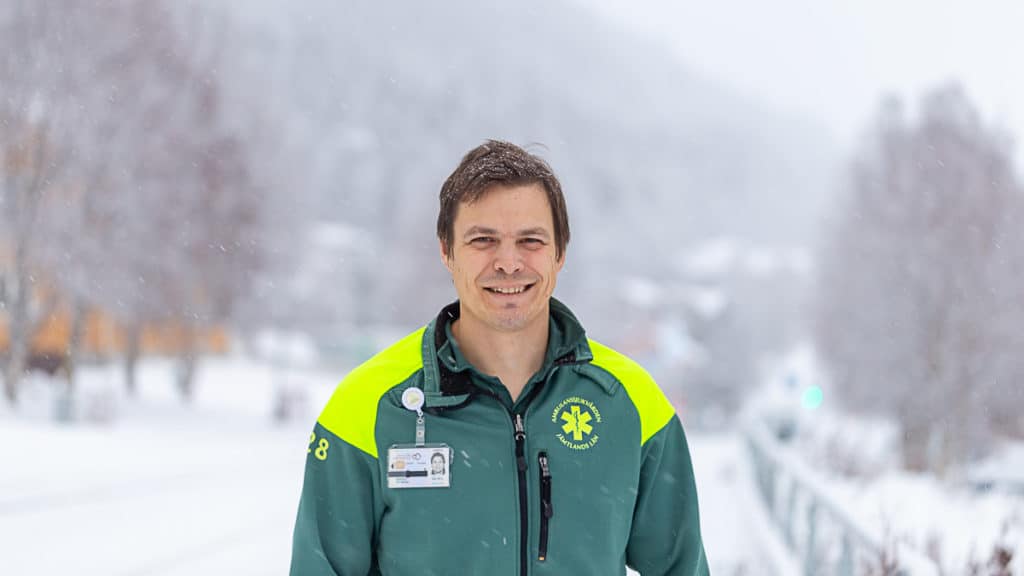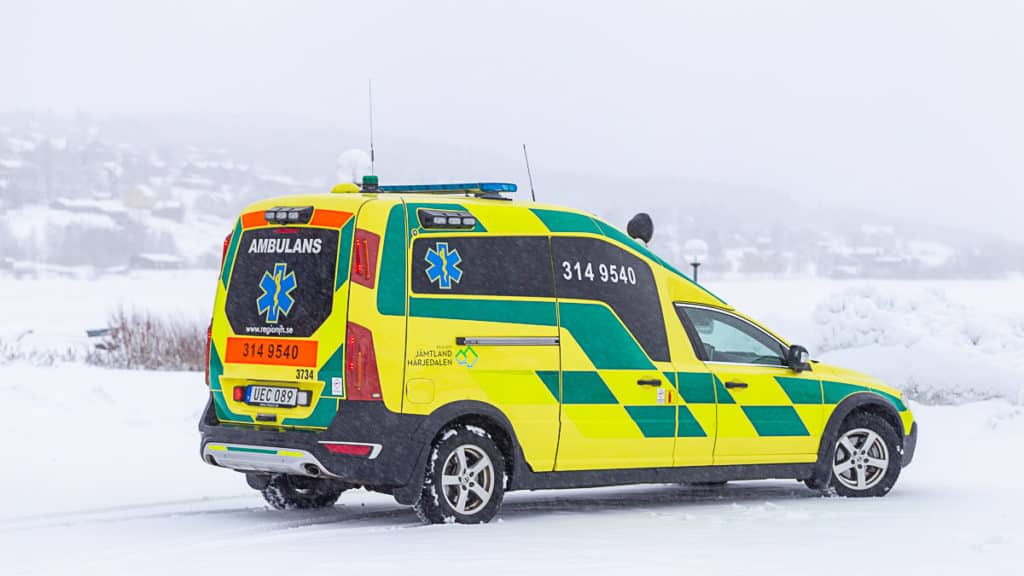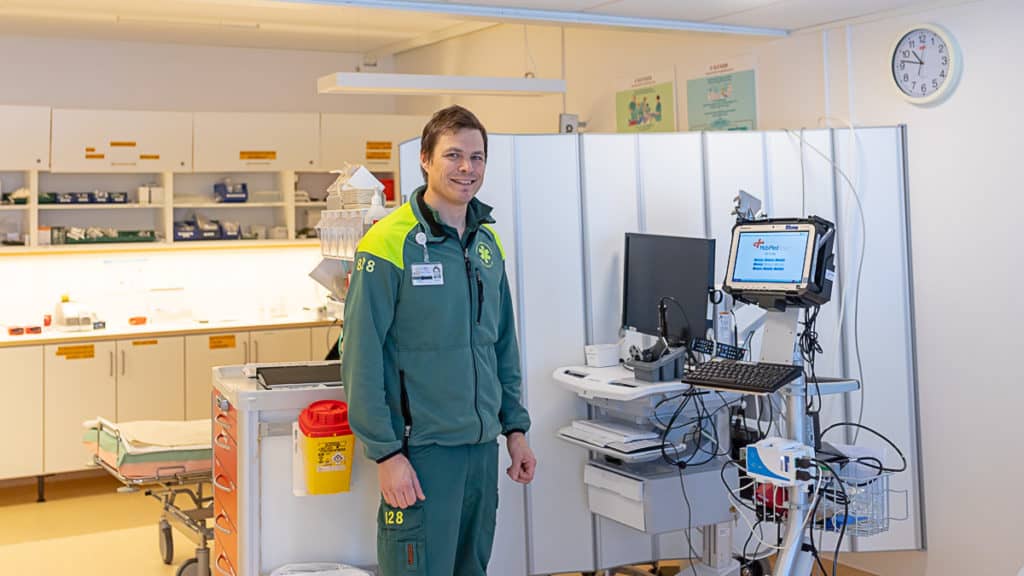Ortivus’s products are developed to work in tough environments in both rural and urban areas. This development is an ongoing process that is undertaken in close collaboration with our users.
Let’s visit one of these users in Funäsdalen, a small village in Jämtland-Härjedalen. This is one of the poorer and less populated regions of Sweden. 1,5% of the Swedish population, or 130 000 people, lives permanently in Jämtland-Härjedalen. They have 12% of Sweden’s area or 49 000 square kilometres at their disposal. Half of the region is covered by forests but there are also lakes, mountains and one town. The mountains are very popular during summer and winter and receives a lot of visits. Funäsdalen is one of these resorts that attracts many tourists.

Long travel from Funäsdalen to hospital
In the middle of the village we find Funäsdalen Health Care centre and next door the ambulance centre. Together they act as a hub for the health care in the area. Both are much better equipped than the average Swedish Health Care centre. They have to be, the closest hospital is a one hour drive away. Unfortunately, that hospital is in Norway and normally only admit Norwegian patients. The closest Swedish hospital is in Östersund, 200 kilometres from Funäsdalen.
Most of the year, there is only one ambulance in Funäsdalen and when it is out on a mission transporting patients, it is gone for several hours. Therefore, transporting patients to the hospital should only be undertaken when patients need urgent medical care. Around 40% of the patients the ambulance staff visit, are treated at home, or are able to travel on their own to hospital.
One important key to reduce unnecessary transports to hospital is that MobiMed gives the ambulance staff access to the patient’s previous records. This really helps when making the decision.

MobiMed used by more staff than the nurses working at the ambulance
Another benefit of MobiMed is that it can be used to take ECG or monitor a patient’s heart and other vital parameters outside hospitals, for example on a mountain slope or in people’s home.
Today, MobiMed is used by paramedics from the ambulance and nurses at the Health Care centre. But it would be useful if the staff taking care of elderly and fragile people could bring MobiMed home to patients in the future. At least that is the vision of Andreas Hedenfalk who is a nurse in Funäsdalen. Andreas believes in closer collaboration between the local health care professionals.
In a small place like Funäsdalen, it is important that all health care professionals help each other. This is done already. When the ambulance is out on a mission, patients can receive similar treatment at the Health Care centre that is equipped with MobiMed thanks to Andreas. And the other way around, when the Health Care centre closes at five during weekdays, the ambulance staff are still on call. This collaboration could be developed even further, something the patients will benefit from. Most patients prefer if all their health care needs can be dealt with in one go.

The life as a Emergency Physician in a small village
The ambulance is health care on the move. As mentioned before, there is usually only one ambulance available. But there is a spare vehicle that they can use if the usual one is away when a new shift starts. A shift is 24 hours. Eight full time employees each work seven shifts a month.
In between missions they spend their time in a cosy cottage. They clean their vehicle, sleep or read a book. Some days there are no missions, some days there are too many. When they are really busy (and weather permitting) they can get assistance from the ambulance helicopter based in Östersund. The helicopter can take three patients at a time and makes the trip to Östersund in half an hour.
According to Andreas they sometimes transport three patients in their ambulance as well. It is a bit cramped, especially if the patients are wearing skiing boots because it is a small vehicle for an ambulance. But the Volvo is comfortable to drive long distances.
Andreas Hedenfalk obviously likes his job and has many ideas for improvements in many areas. At Ortivus we really value having users like Andreas that tell us what they need in their day to day life so that we can constantly improve our products and help health care professionals around the world.

